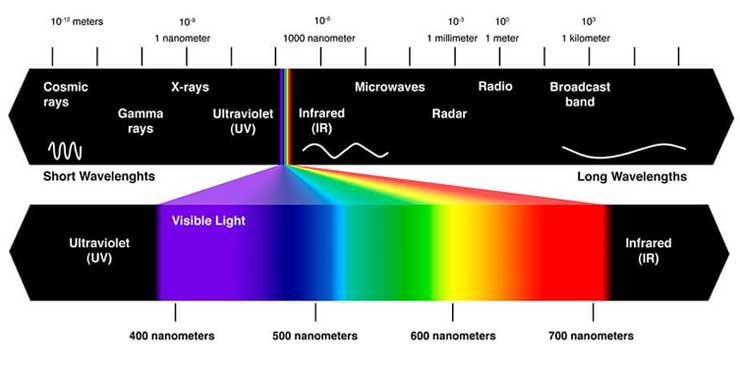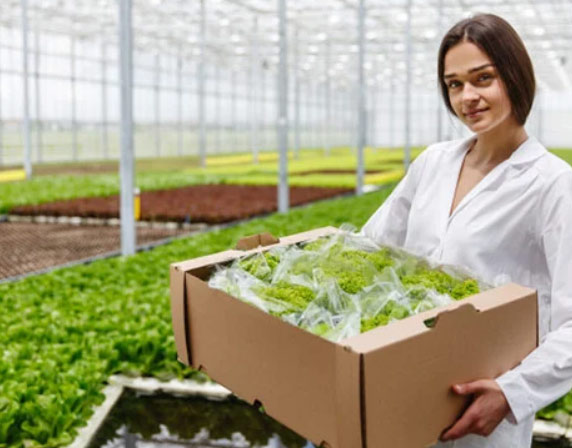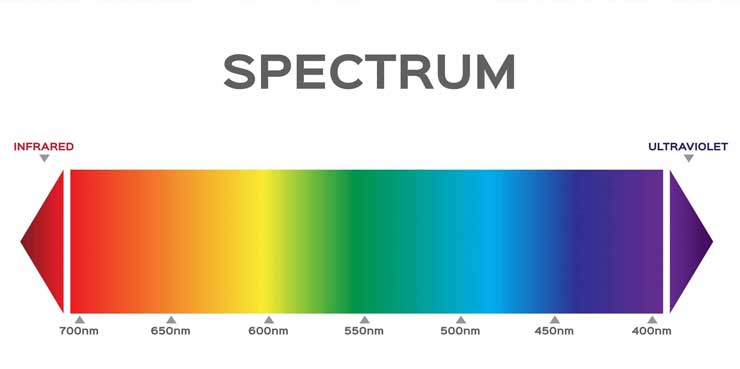The basis of LED plant lighting theory
In the solar spectrum, the light radiation in the 300-800mm band is called plant physiologically active radiation (Physio- logically active radiation), and the light radiation in the 400-700mm band is called plant photosynthetically active radiation (PAR). The former includes near-ultraviolet and far-red light, while infrared radiation does not belong to physiologically effective radiation. 380-780nm is visible light, and some ultraviolet light and far-red light are not visible light.
The non-photosynthetically active radiation in the physiologically active radiation is near ultraviolet radiation (wavelength 280-400mm) and far-red radiation (wavelength 700-800mm), which directly affect the photomorphogenesis and development of plants. Secondary metabolite production. Near infrared radiation and infrared radiation with a wavelength of more than 800mm have no effect on physiological processes such as photosynthesis of plants, but they will be converted into heat energy after being absorbed by plants, thereby warming plants. Photosynthetically active radiation accounts for the The proportion of solar radiation on the plane is 45% to 50%.
In facility horticultural lighting, light intensity is expressed by the number of photons (mol). Plant photochemical reactions do not depend on the energy of light quantum, but on the number of light quantum. Therefore, although the energy of red light is smaller than that of blue light, the relative photosynthetic efficiency is high. In facility horticulture, photosynthetically effective photon flux (PPF) and photosynthetically effective photon flux density (PPFD) are commonly used as units to measure light intensity.

In visual lighting, the commonly used luminous flux represents the integral of the product of the light energy of each wavelength in the visible light range and the optical visual efficacy, in units of lumens (lm). The ratio of luminous flux to power consumption is an indicator for evaluating the luminous efficiency of lamps (lm/W). Illuminance is the quotient of the luminous flux divided by the illuminated area, and the unit is lx.
In fact, the illuminance of 1lm of light irradiating on an area of 1m2 is 1k. The conversion factor for converting the unit of illuminance into PPF depends on factors such as the type of light source (spectral distribution) and the type of wavelength. Long-term research has shown that the light energy absorbed by plant photosynthesis in the visible light spectrum (380~760nm) accounts for 60%~65% of its physiological radiation light energy. , orange light (accounting for about 55% of the physiological radiation) and blue and violet light (accounting for about 8% of the physiological radiation) with a wavelength of 400~510nm (the peak is 450m) are the absorption peak areas.

Therefore, developing a plant artificial light source with these two wavelength bands (especially wave crest) as the main body will greatly improve its light energy utilization efficiency. In recent years, with the continuous advancement of LED technology, it is possible to achieve this goal. LEDs can emit monochromatic light required for plant growth (such as blue light with a peak of 450nm, red light with a peak of 660nm, etc.), and the spectral domain width is only ±20m, and after the combination of red and blue LEDs, it can also form photosynthesis with plants. The light energy utilization efficiency reaches 80% to 90%, and the energy saving effect is extremely significant.
The radiation that can be felt by the retina of the human eye (wavelength is 380-780m) is called visible light. The spectral visual sensitivity of the human eye is highest in yellow-green light (wavelength 555m), and blue light and red light are lower, especially those with wavelengths below 400mm and above 700mm. Light has the lowest visual sensitivity. For example, if the visual sensitivity of wavelength 555nm is 1, the visual sensitivity of 430mm and 720nm light is only 0.001.
Although visible light and plant physiologically effective radiation have roughly the same wavelength range, the spectral sensitivity of plant leaf photoreceptors is quite different from that of the retina of the human eye. The spectral range of solar radiation is 320-3200 nm, and the radiation intensity near the wavelength of 550 mm is the largest, which is basically the same as the wavelength at which the human eye has the highest visual sensitivity to visible light.

The research on plant light quality biology based on LED method began in the 1990s (Bula et al., 1991), and it only lasted more than 20 years, and the research has made gratifying progress. The previous research focused on revealing the biological laws at the individual level of plants, and related research provided a basis for the design of LED light sources for facility horticulture and intelligent control of light environments.







